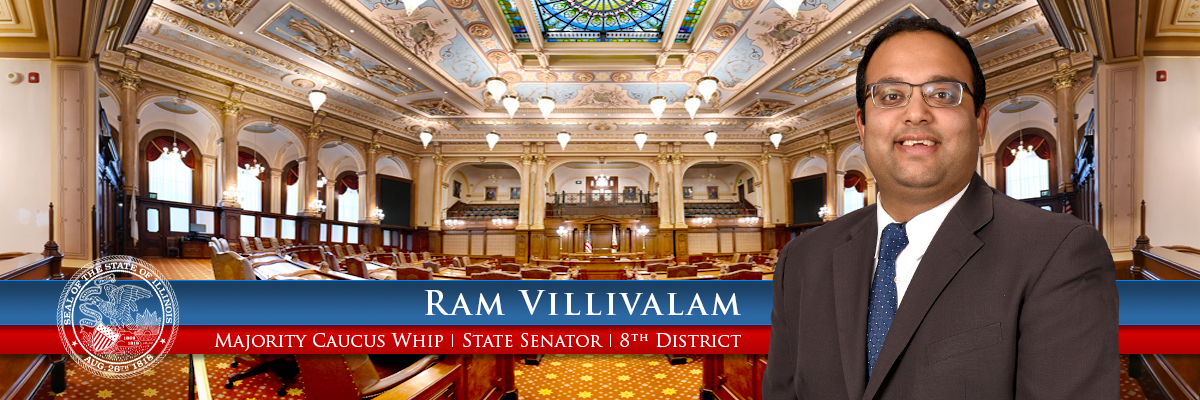Originally publish in The Daily Line on April 5, 2021.
Mass transit became an immediate casualty of the COVID-19 pandemic last year, as nationwide stay-at-home orders and crowding concerns drove Americans away from trains and buses.
The drop-off did not spare Chicago-area transit networks, which saw a freefall in ridership in April and May 2020, according to a March 25 report from the Illinois Economic Policy Institute. Even as the region began to partially reopen in June, CTA buses saw a 50 percent decline in trips compared to 2019, while CTA trains suffered a loss of 77 percent and Metra lost 89 percent of its riders.
The vacuum deprived the two agencies and the Pace suburban bus system of hundreds of millions of dollars in critical revenue, due in part to a state law requiring agencies to rely on fares to cover half their costs.
But Chicago-area transit agencies are about to get some significant help. The American Rescue Plan Act (ARPA), the $1.9 trillion federal stimulus package signed into law by President Joe Biden last month, contains $30 billion earmarked for transit across the country, including $1.5 billion for Chicagoland transit systems.
Chicago’s Regional Transit Authority (RTA) has not yet determined how much of the funding it will be able to give each agency, according to RTA executive director Leanne Redden, who wrote in a statement that she envisions “the allocation of the American Rescue Plan money will be rolled into our budget cycle for 2022 and beyond.”
But even with the new funds, it could take years for passengers to fully return in a world where COVID-19 has had a lasting impact on the way residents move for travel, work and leisure.
Officials and transit advocates alike say it’s essential for transit services across the region to make a full recovery. Jacky Grimshaw, vice president for government affairs at the Center for Neighborhood Technology, said transit helped insulate Chicago against chaos throughout the pandemic because it serves so many essential workers.
“The one thing the pandemic has shown us is that our society can’t function without a baseline of essential workers,” she said. “Coming back post-pandemic, I think we have to keep in mind that we have to maintain basic services for the society to operate at, which means that I don’t think transit should be shortchanged.”
The pandemic’s toll on transit
Transit systems around Chicago have suffered steep financial losses from a year and counting of COVID-19.
Farebox revenue declined in 2020 by a combined $645 million for CTA, Metra and Pace, according to the Illinois Economic Policy Institute report. CTA lost out on $364 million, or 62 percent of its farebox revenue; Metra lost 69 percent or $253 million, and Pace lost and 50 percent or $18 million.
CTA has continued operating at its usual capacity throughout the pandemic, counting on a raft of federal aid to help make up the difference between rider fares and operating costs.
Two previous federal stimulus packages have helped regional transit agencies avoid the pandemic’s most dire consequences. Last March, the CARES Act provided about $817 million to CTA, $479 million to Metra and $11.3 million to Pace.
Despite this, CTA leaders left a $372 million hole in the agency’s 2021 budget, saying the network would face “drastic and devastating” cuts unless it got more help from Washington.
That help arrived in December, when Congress passed a $908 billion relief package that plied the CTA with $361.3 million while Metra received $83.4 million and Pace received $21.4 million.
While the aid packages headed off a “doomsday scenario,” Pace is still “facing tens of millions of dollars of lost revenue,” agency spokesperson Maggie Daly Skogsbakken told The Daily Line.
Pace’s ridership is still around half of 2019 levels, although Skogsbakken added “we are trending upwards, so there’s a positive outlook.”
A spokesperson for Metra declined to comment on the impact of the coming stimulus, saying it was too early to tell. A spokesperson for CTA did not respond to a request for comment.
The pandemic’s fiscal damage to transit agencies was softened by the $45 billion Rebuild Illinois capital plan that state lawmakers had passed in 2019, according to Audrey Wennink, director of transportation at the Metropolitan Planning Council. The state “for the first time ever” created a “dedicated source of transit capital revenue” through Rebuild Illinois, putting the state in a “much stronger position” in advance of the pandemic, Wennink said.
However, the cash sources tapped by Rebuild Illinois also left transit revenues vulnerable to the economic crash that accompanied COVID-19. The capital plan assumed the state would take in $1.1 billion last year in fuel taxes and sales taxes, but the two revenue streams nosedived as people drove and shopped less. Instead, fuel and sales taxes generated just $800 million, according to the Illinois Economic Policy Institute.
Though vehicle traffic has rebounded this year to about 90 percent of its pre-pandemic volume, motor fuel tax revenue was about $308 million lower than projected last year, $27 million of which would have gone to Chicago transit agencies and $3 million of which would have gone to other transit agencies across the state.
Sen. Ram Villivalam (D-Chicago), who chairs the Illinois Senate Transportation Committee, also credits the 2016 Safe Roads Amendment for helping limit the damage to transit.The state constitutional amendment passed by voters in 2016, which forbids transportation revenues from being used for non-transportation uses, “certainly helped because it ensures that that funding will be steady,” Villivalam said.
How the American Rescue Plan could help
The American Rescue Plan Act — the first major legislation of President Joe Biden’s administration — earmarks $1.5 billion for the RTA to dole out to Chicago-area transit agencies, on top of $7.5 billion in direct aid to the state and another $1.8 billion to the city of Chicago.
Ordinarily, the agency distributes funding to agencies according to a static formula that gives 58 percent to CTA, 34 percent to Metra and 8 percent to Pace. But last year, the RTA distributed the first two rounds of aid to transit agencies using a “performance-based” allocation formula designed around “Critical Need Areas” where residents most heavily depend on transit.
RTA spokesperson Melissa Myer told The Daily Line the data-driven approach may not necessarily apply to future financial assists.
“That allocation process was unique and doesn’t set a precedent for how future money, such as the American Rescue Plan, will be distributed,” she said.
But advocates like Julia Gerasimenko, advocacy manager for the Active Transportation Alliance, hope the RTA will retain its new model as it continues to disburse relief funds.
“We are trying to urge them to use this really great analysis… for the third round as well, since we think that’s what the moment calls for,” Gerasimenko said.
Gerasimenko said the Active Transit Alliance will be pushing for ARPA funding and future transit allocations to prioritize equity in distribution. She offered the example of a worker who works in a different county than where they live.
“Having to commute for six hours and wake up at midnight to get to work at 6am because there’s only that one Pace bus that comes once an hour that will make sure to get them to their job — that’s unequitable and that’s a problem,” she said. “By increasing frequency of service that could really have a tremendous impact and encourage more ridership as well.”
Chicago Ald. Gilbert Villegas (36), who chairs the City Council’s Committee on Economic, Capital and Technology Development, also said he supports a performance-based allocation method among area transit agencies.
“The RTA, when they disperse these funds, [needs] to take a look at immediate needs, especially related to COVID,” he said.
Villegas said he wants to use his committee to help the CTA and Metra “operate in a way that obviously delivers the customer to point A to point B, but also in a safe manner, and making sure that they have the necessary resources.”
Villegas convened a marathon hearing last August to chew over Chicago’s infrastructure needs, predicting a Democratic takeover in Washington. He pledged to follow up with a hearing that examines the capital plans of the CTA and the city’s other “sister agencies.”
Related: City must find $2.7B for aging infrastructure, $10B for lead pipe program, officials say
What federal money can’t fix
Despite the coming cash infusion, the CTA and Metra may face more trouble down the road if state leaders don’t change the state law requiring that they rely on rider fares for half their revenue, Villegas said. The alderman said the “farebox recovery ratio” mandated under the 1974 Regional Transit Authority Act is “not viable.” And with the pandemic’s changes to work and commuting, transit providers may need to rethink their programs and funding structures.
“Until we take a look at keeping up with the cost of doing business…I think you’re going to find this hole,” Villegas said. “Because it costs $2.50 to operate, but we’re only charging $1.25. Where are we making that difference?”
Gerasimenko also cast doubt on the farebox recovery ratio as a viable long-term financial strategy.
“We can’t just be depending on the farebox — the pandemic made that clear,” Gerasimenko said. “We need to be really creative and inventive when we’re trying to make transit whole and robust and…compete with the ease with which people get around with cars.”
Wennink said the dive in fare revenues and sales taxes created a structural challenge for funding public transportation in the long term.
“This is even making us potentially rethink funding structures writ large,” she said. “This funding will carry us for a while, but we also need to be innovating during this time, and thinking about the long-term future of transit.”
Alternatively, local leaders could use the federal aid to subsidize fares as a way to bring back riders and shore up fare revenues, Wennink said.
“Monthly passes can be distributed through landlords who are worried about renting, downtown employers, anyone who is on the transit system — this is this is good policy in general,” Wennink said. “What we want is to incentivize transit use in this region.”
If leaders in Springfield want to help set up transit agencies on a more solid financial path, they can also switch the state’s policy of allocating 45 percent of its transportation funding to Northeast Illinois while the remaining 55 percent go elsewhere, Grimshaw said. She said state leaders should “reverse that percentage,” which she called arbitrary.
Villivalam said a change in the transit funding structure statewide wasn’t unthinkable. He pointed to SB 2475, a bill he introduced in February that would require the RTA to put together a “transparent prioritization process” for northeastern Illinois transit projects funded by the state. It would also mandate the Illinois Department of Transportation to begin using a “performance based selection process for road projects.”
“We are having that conversation, and we’ll continue to have that conversation through legislation like Senate Bill 2475,” Villivalam said.
Long road to recovery
Mass transit’s recovery from COVID-19 is likely to be a multi-year process. Though the CARES Act, the December stimulus and ARPA will help shore up operating costs for this year and into 2022 and 2023, but transit agencies will be back to trying to cover their operating costs through riders’ fees once the federal aid runs dry.
Villegas said he was looking forward to additional federal assistance for capital improvements, which the American Rescue Plan is explicitly not geared toward. The Biden administration last week unveiled the $1.9 trillion American Jobs Plan, and Villegas anticipated the package will include financial aid for extending the CTA Red Line, among other Chicago-area transit infrastructure projects.
“I anticipate that with the seniority that Illinois enjoys in the Senate and in the house, I think that we’ll be able to identify some funding for more transit,” he said.
At the same time, Villegas acknowledged that such spending, even if it passes, is a once-in-a-generation expenditure.
“Coming out of this coming out of this pandemic, we need to make sure that we’re positioned well to recover,” he said. “We only have one chance to get it correct.”
Still, to Gerasimenko, money from the three major federal packages passed during the pandemic will be nothing short of imperative.
“It was really essential that federal relief came through in order to make sure that we could keep service running,” she said. “Even at the height of the stay-at-home order, there were still hundreds of thousands of people riding transit, which really underscores how essential it is to our economy.”




